
Around 2006, an option for "Running it Twice" started to become popular on televised poker cash games. It was becoming a regular occurrence on the show High Stakes Poker on the Game Show Network (GSN) and several other cash game shows.
But what affect does running it once, twice, or even 44 times do to your expected result? How does it affect your variance?
What is "Running it Twice"?
Two players can agree to "run it twice" when one of the players is all-in and there are still more cards to come. When the players agree to run it twice, they are agreeing to complete the hand with two sets of outcomes. If there is one card left to be dealt, then two separate River cards will be dealt, each card acting as a the final community card for two separate outcomes. The winner of each outcome will be entited to a half of the total pot.
If you win both times, you win the entire pot. If you lose both times, you lose the entire pot. If you win one and lose the other, then the pot is divided in half and distributed amongst the two players.
What about Running it 3...4...or even 44 Times?
You can "run it" multiple times. Each time you run it, the pot divisions become smaller and smaller, and it becomes more likely that the underdog will get at least some of his money back.
How does Running it Multiple Times affect Your Expected Value (EV)?
It doesn't.
Your EV is exactly the same whether you run it once, twice, or even 44 times.
How does Running it Multiple Times affect Your Variance?
The only statistical change that results from multiple run-outs is a lowering of variance. The more turns and rivers you see, the more your results will resemble the expected result and the lower the fluctuation to your bankroll.
Calculating the Results of Running it N Times
Most seasoned poker players are already aware that running it multiple times results in zero change to your EV. But I've often heard noobs (incorrectly) say that running it multiple times is bad for the favorite in the situation, and that running it twice is good for the underdog's EV.
We'll see why these people are incorrect by looking at a few examples.
1-outer on the River
Let's take a look at an extreme situation.
I think the best way to illustrate that the EV remains the same is to look at the case where the underdog has a one-outer with just the River to come.
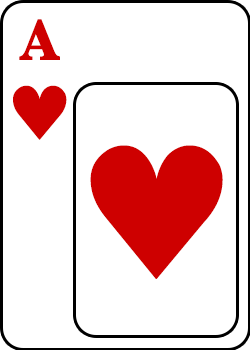

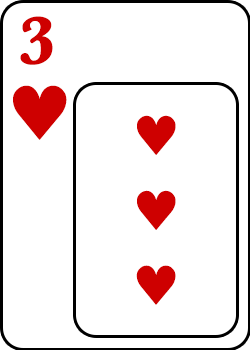
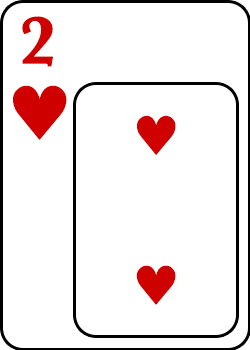
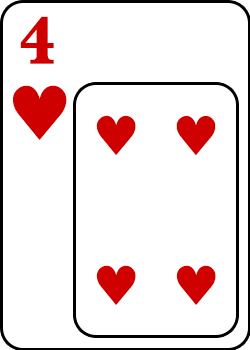
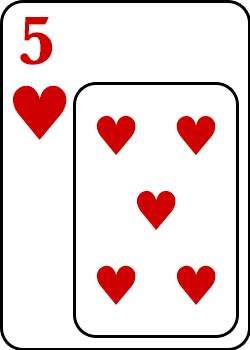
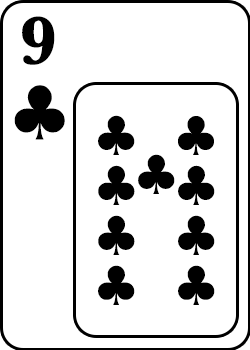

There are 44 unknown cards and only 1 card will make the underdog a winner.
If the pot were $44, then he'd have an EV of $1 (
So let's run it 44 times!
To do this, we have to ignore burn cards and deal out all 44 River cards to make a total of forty-four $1 pots.
Since we already know the dog is drawing to a one-outer, we know exactly one of those $1 pots will have his case 6♥, netting him $1 and awarding the favorite $43.
So both the EV and the Actual Result are equal when we run the "one-outer on the river" scenario to exhaustion, dealing out all 44 river cards.
Multiple Outs on the River
The same is true for any number of outs with just the River to come. If the dog is drawing to a flush against the favorite's top pair, we'd be looking at 9 outs.
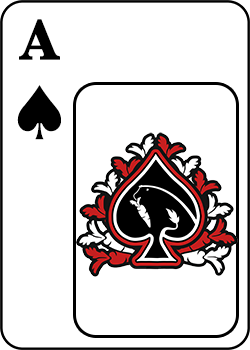
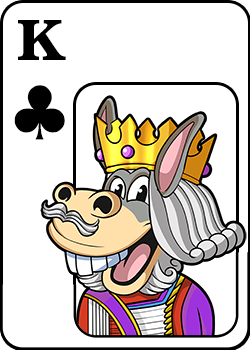

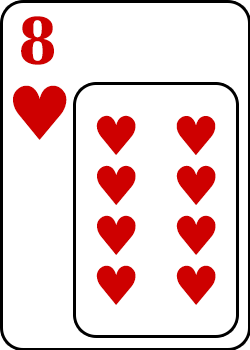


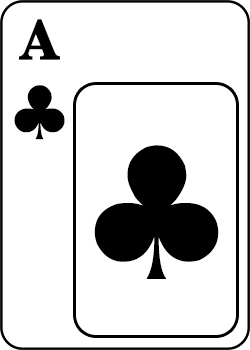
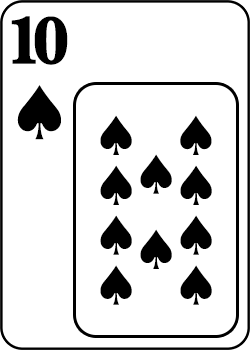
A♦K♦Q♦J♦T♦9♦8♦7♦6♦5♦4♦3♦2♦
Q♣J♣T♣9♣8♣7♣6♣5♣4♣3♣2♣
Here's what each of those 44 pots will look like when you run it 44 times:
| Pot # | Card | Result | Pot Share |
|
|---|---|---|---|---|
| 1 | A♥ | W | +$1 |
|
| 2 | K♥ | W | +$1 |
|
| 3 | Q♥ | W | +$1 |
|
| 4 | T♥ | W | +$1 |
|
| 5 | 9♥ | W | +$1 |
|
| 6 | 7♥ | W | +$1 |
|
| 7 | 6♥ | W | +$1 |
|
| 8 | 3♥ | W | +$1 |
|
| 9 | 2♥ | W | +$1 |
|
| 10 | K♠ | L | $0 |
|
| 11 | Q♠ | L | $0 |
|
| 12 | J♠ | L | $0 |
|
| 13 | 9♠ | L | $0 |
|
| 14 | 8♠ | L | $0 |
|
| 15 | 7♠ | L | $0 |
|
| 16 | 6♠ | L | $0 |
|
| 17 | 5♠ | L | $0 |
|
| 18 | 4♠ | L | $0 |
|
| 19 | 3♠ | L | $0 |
|
| 20 | 2♠ | L | $0 |
|
| 21 | A♦ | L | $0 |
|
| 22 | K♦ | L | $0 |
|
| 23 | Q♦ | L | $0 |
|
| 24 | J♦ | L | $0 |
|
| 25 | T♦ | L | $0 |
|
| 26 | 9♦ | L | $0 |
|
| 27 | 8♦ | L | $0 |
|
| 28 | 7♦ | L | $0 |
|
| 29 | 6♦ | L | $0 |
|
| 30 | 5♦ | L | $0 |
|
| 31 | 4♦ | L | $0 |
|
| 32 | 3♦ | L | $0 |
|
| 33 | 2♦ | L | $0 |
|
| 34 | Q♣ | L | $0 |
|
| 35 | J♣ | L | $0 |
|
| 36 | T♣ | L | $0 |
|
| 37 | 9♣ | L | $0 |
|
| 38 | 8♣ | L | $0 |
|
| 39 | 7♣ | L | $0 |
|
| 40 | 6♣ | L | $0 |
|
| 41 | 5♣ | L | $0 |
|
| 42 | 4♣ | L | $0 |
|
| 43 | 3♣ | L | $0 |
|
| 44 | 2♣ | L | $0 |
|
| Total Pots | Total Amount Won | Total EV | ||
| 44 | +$9 |
|
It's pretty easy to see that if you run it 44 times, exhausting all of the undealt cards,
then your number of outs will be exactly the number of mini-pots that you will win. So 2
outs means that you'll get
The more times you "run it", the more your actual results will converge toward the expected value. In our extreme example of running it 44 times, the actual result is EXACTLY your expected result and variance has been cut down to ZERO.
Running it 2 or 3 Times
What if we live in the real world and we can't practically run it 44 times? Well, I guess it's time to break out some formulas.
Running it Twice with a 1-Outer on the River
It might seem silly for a person with a 1-outer to run it twice, because there's zero chance he'll win both pots. In actuality, there's no net change to his EV and would be trying to increase his odds of getting any kind of cash back on his near hopeless situation. Chopping a pot can seem like a very favorable outcome when you need to hit your case cardThe case card is the only undealt card that will turn your losing hand into a winning hand. This usually applies to poker when you're drawing to a one-outer. .
By running it twice, you're doubling your chances of getting money back, but the amount you receive will be halved.
The EV for running a 1-outer twice is pretty simple:
Where
And this is exactly the EV we saw when running it 44 times.
Running it Twice with a 2-Outer on the River
This example is less trivial, and the formula is a little more complex. In the previous example, we only had to consider the case where the underdog won 1 of the 2 pots. Here we also have to calculate the probability of winning both pots.
Here's how we calculate the EV of running it twice on the river with a 2-outer:
And this is exactly the EV we saw when running it 44 times.
Running it n-Times with a z-Outer on the River
And we can look at the general formula for calculating the EV of a z-outer with one card to come:
Where n is the number of times you want to run the river (
Breaking down this formula we can see that we are
|
|
Adding up each of the expected values of winning i number of pots from 1 to n. |
|
|
Multiplied by the share of the pot you would win |
|
|
Multiplied by combination of ways you could win that many pots |
|
|
Multiplied by number of ways you win i pots and lose n-i pots |
|
|
Divided by the number of ways the n cards could be dealt |
And this formula can be simplified in the following manner:
No, we're not using Voldemort's ID Card. We're applying Vandermonde's Identity, which states the following:
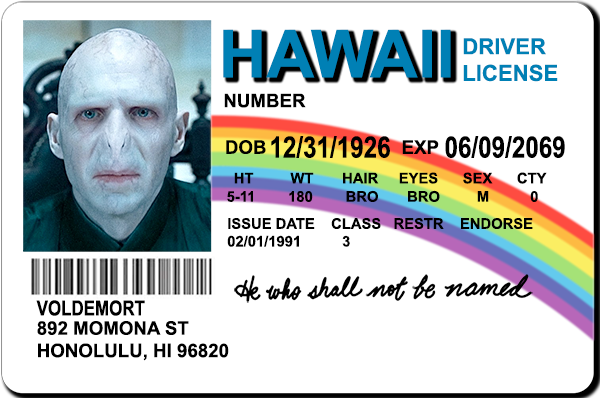
Running it n-Times with a z-Outer on the River with additional known cards
And if we have information about mucked or burned cards, we can use a different value instead of 44. So if we know 2 folded hands (4 additional cards), the number of unknown cards would be 40 (4 on the board, 4 in the live hands, and 4 mucked = 12 cards subtracted from 52 cards would be 40 unknown cards) and you could run it up to 40 times.
Here's the same formula as above except we've substituted the 44 unknown cards with
Where z is the number of outs, y is the number of unknown cards (
And that's every possible scenario when we're drawing the river card multiple times
We've considered any number of outs (z), any number of unknown cards (y), running it any
number of times (n), and we've proven that this always reduces to an expected value of
So we've learned the following:
Your EV is the same no matter how many times you "run it"
Your actual result will converge to the EV the more times you "run it"
Your variance will lower the more times you "run it"
On the next episode of JackAce...
In the future, we'll look at running it multiple times on the turn, where the math gets more complicated. When there are two or more cards to come, your results won't be deterministic, especially when dealing all unknown cards may not be possible (if there is an uneven number of undealt cards, for example).
If you have two outs, sometimes you'll win two pots, and sometimes you'll only win one even if you run the deck to exhaustion (~22 times). This is because sometimes your outs will show up on both the turn and the river and sometimes one of your outs will remain undealt.
